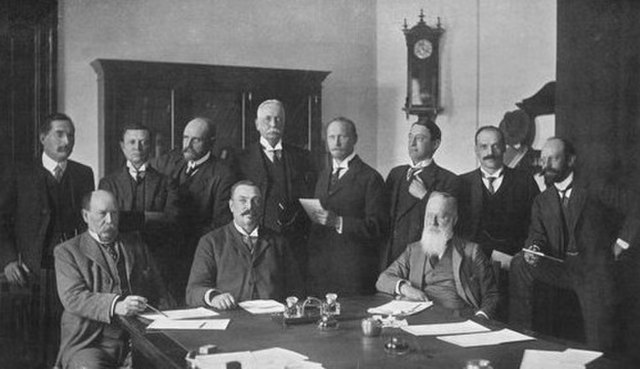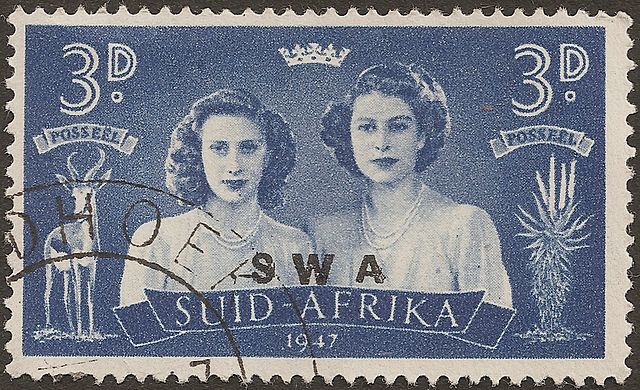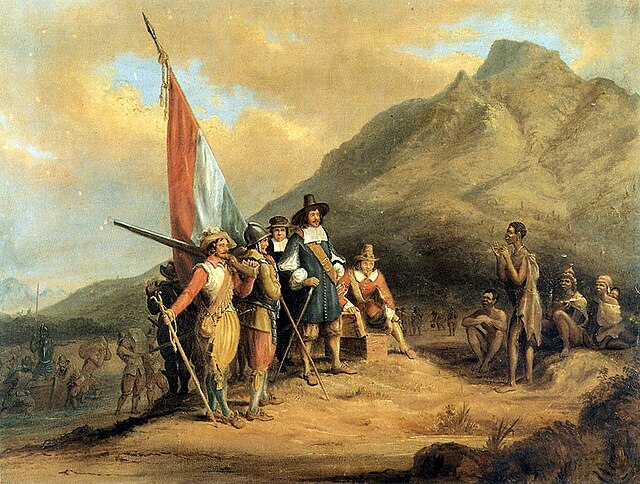The Union of South Africa was the historical predecessor to the present-day Republic of South Africa. It came into existence on 31 May 1910 with the unification of the Cape, Natal, Transvaal, and Orange River colonies. It included the territories that were formerly a part of the South African Republic and the Orange Free State.
Holiday Time in Cape Town (1891-1899) depicted an imagined future united South Africa at a time when the idea was being widely debated in the Cape Colony.
The first Union cabinet
South West Africa stamp: Princesses Elizabeth and Margaret on the 1947 Royal Tour of South Africa
South Africa, officially the Republic of South Africa, is the southernmost country in Africa. It is bounded to the south by 2,798 kilometres (1,739 mi) of coastline that stretches along the South Atlantic and Indian Oceans; to the north by the neighbouring countries of Namibia, Botswana, and Zimbabwe; and to the east and northeast by Mozambique and Eswatini. It also completely enclaves Lesotho. It is the southernmost country on the mainland of the Old World, and the second-most populous country located entirely south of the equator, after Tanzania. South Africa is a biodiversity hotspot, with unique biomes, plant and animal life. With over 62 million people, the country is the world's 23rd-most populous nation and covers an area of 1,221,037 square kilometres. Pretoria is the administrative capital, while Cape Town, as the seat of Parliament, is the legislative capital. Bloemfontein has traditionally been regarded as the judicial capital. The Constitutional Court, the country's highest court, is located in Johannesburg.

Front of Maropeng at the Cradle of Humankind
Portuguese explorer Bartolomeu Dias planting the cross at Cape Point after being the first to successfully round the Cape of Good Hope.
Charles Davidson Bell's 19th-century painting of Jan van Riebeeck, who founded the first European settlement in South Africa, arrives in Table Bay in 1652
Depiction of a Zulu attack on a Boer camp in February 1838







